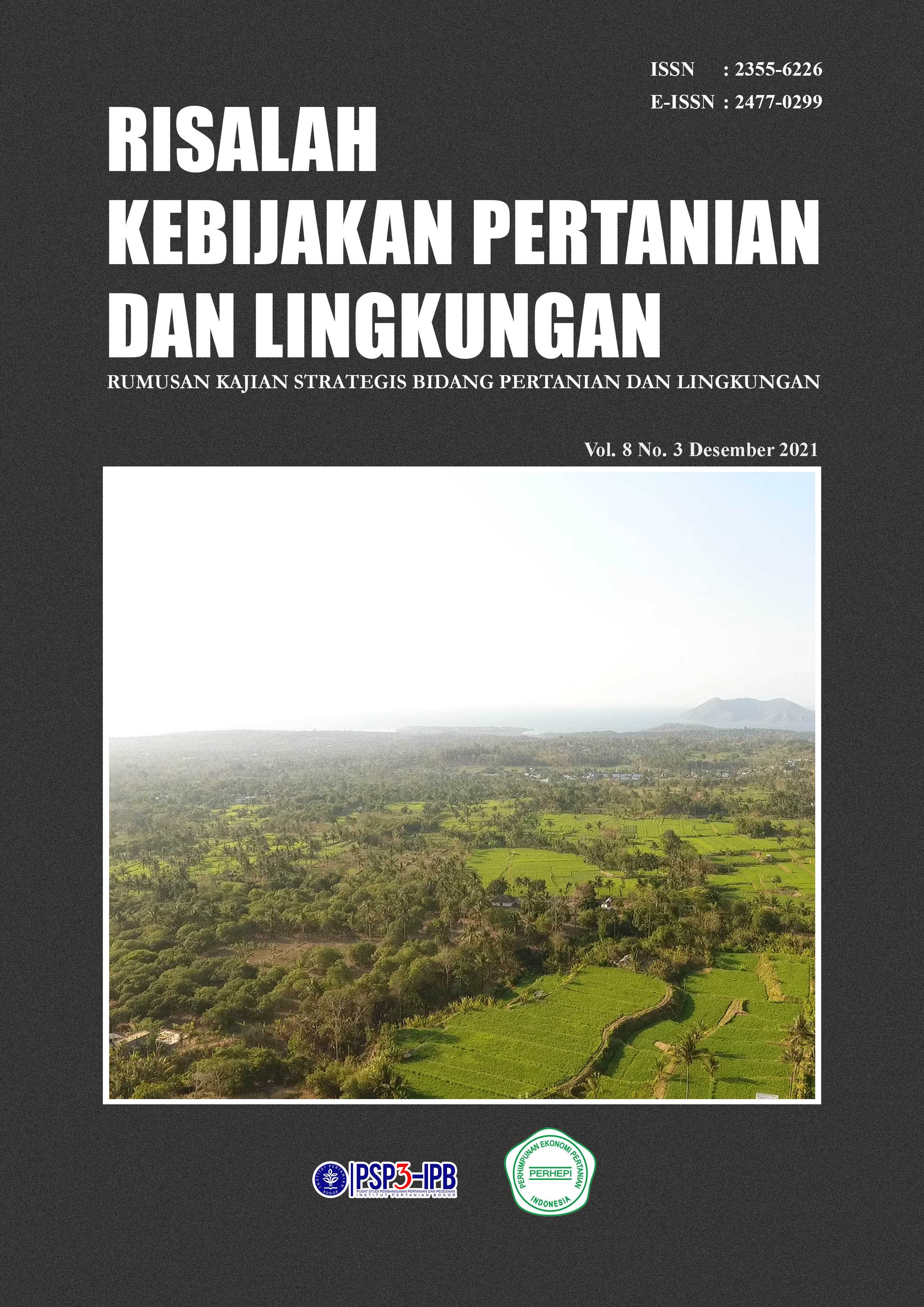STRATEGI KONSERVASI TUMBUHAN HOYA DI BODOGOL, CAGAR BIOSFER TAMAN NASIONAL GUNUNG GEDE PANGRANGO MELALUI PROMOSI EKOWISATA
Abstract
Taman Nasional Gunung Gede Pangrango (TNGGP) merupakan salah satu kawasan konservasi in situ di Jawa Barat dan telah ditetapkan sebagai cagar biosfer sejak tahun 1976 karena nilai keanekaragaman hayati dan jasa lingkungannya bagi masyarakat sekitar. Prinsip konservasi yang berkembang saat ini tidak hanya melalui pengawetan jenis namun juga harus bisa mengakomodasi dan mengatur pemanfaatan secara lestari. Keterkaitan dengan posisi TNGGP sebagai kawasan cagar biosfer, diperlukan harmonisasi antara kepentingan konservasi kawasan dan biodiversitas yang terkandung di dalamnya dengan kesejahteraan masyarakat sekitarnya. Salah satu masalah yang di hadapi adalah semakin menyempitnya lahan pertanian garapan masyarakat sekitar kawasan karena semakin bertambahnya kegiatan alih fungsi lahan pertanian menjadi pemukiman atau penggunaan lainnya. Kondisi ini dikhawatirkan akan meningkatkan tingkat gangguan ke dalam kawasan. Oleh karena itu perlu dikembangkan strategi pemanfaatan sumberdaya hayati yang tidak mengganggu keberadaan populasi dan ekosistem di dalam kawasan konservasi, namun dapat membantu mengatasi permasalahan perekonomian masyarakat sekitar kawasan. Salah satu potensi sumberdaya hayati yang terdapat di TNGGP yang dapat dikembangkan adalah tumbuhan dari marga Hoya (Apocynaceae: Asclepiadoideae). Tumbuhan Hoya saat ini semakin populer dimanfaatkan sebagai tanaman hias, di samping memiliki manfaat lainnya, yaitu sebagai sumber bahan obat, sekaligus penyerap polutan/racun dalam ruangan maupun bahan industri kosmetik. Secara ekologis, Hoya sebagai tumbuhan epifit turut menyumbang biomasa dan penyerapan karbon tanpa menambah penggunaan lahan, dan fungsi ekologis lainnya terkait asosiasinya dengan serangga peyerbuk maupun semut dan lainnya. Terdapat 10 jenis Hoya di TNGGP, dan jumlah jenis terbanyak terdapat di resort Bodogol. Jenis-jenis tersebut juga terdapat di jalur interpretasi Bodogol, sehingga kekayaan jenis jenis Hoya tersebut dapat dimanfaatkan secara lestari untuk dapat digunakan sebagai alternatif mata pencaharian penduduk sekitar antara lain melalui pengembangan ekowisata Hoya. Pengembangan ekowisata Hoya di TNGGP dapat difokuskan di lokasi Resort Bodogol dengan berbagai bentuk, misalnya dengan pembentukan Kampung Hoya di Desa Bodogol dan jalur wisata Hoya di Resort Bodogol. Selain itu wilayah resort Bodogol juga merupakan wilayah percontohan sebagai Pusat Pendidikan Konservasi Alam dan juga sebagai stasiun Penelitian yang tentunya pengembangan ekowisata Hoya di Bodogol akan selaras dengan fungsi tersebut. Adapun pengembangan Kampung wisata Hoya dapat melibatkan masyarakat setempat dan beberapa stakeholder terkait.
Metrics
Downloads
References
Benzing, D.H. 2008. Vascular Epiphytes. Cambridge Univ. Press, Cambridge
Burton, C.M. 1997. The medicinal properties of Hoyas. The Hoyan 18 (4): 17-14
Ghazoul, J., Sheil, D. 2010. Tropical Rain Forest Ecology, Diversity and Conservation. Oxf. Univ Press, Oxford.
Kleijn, D., van Donkelaar, R. 2001. Notes on the taxonomy and ecology of the genus Hoya (Asclepiadaceae) in Central Sulawesi. Blumea 46: 457 – 483.
Rahayu, S. 2012. Hoya diversity in Gunung Gede Pangrango National Park. Reinwadrtia 13 (4), pp: 331-339
Rahayu, S., Kusmana, C., Abdulhadi, R., Jusuf, M., Suharsono. 2010. Distribution of Hoya multiflora Blume at the Gunung Gede Pangrango National Park, Indonesia. Journal of Forestry Research 7 (1): 42-52. No ISSN: 0216-0919. No Akreditasi:683/D/2008 (115/Akred-LIPI/P2MBI/06/2008.
Rahayu, S., Abdulhadi, R.., Risna., R.A., Kusuma, Y.W.C. 2011. Keanekaragam Habitat Hoya multiflora Blume di Stasiun Penelitian Bodogol, Taman Nasional Gunung Gede Pangrango. Prosiding Seminar Nasional ”Konservasi Tumbuhan Tropika:Kondisi Terkini dan Tantangan ke Depan”. UPT Balai Konservasi Tumbuhan Kebun Raya Cibodas, Perhimpunan Biologi Indonesia,Taman Nasional Gunung Gede Pangrango, SEAMEO Biotrop. Hal: 321-326. No ISBN: 978-979-99448-6-3.
Rahayu, S. 2011. Hoya as medicinal plant in Indonesia. Warta Kebun Raya 11(1): 15-21. [in Bahasa Indonesia with English abstract].
Rahayu, S. 2011. Hoya as medicinal plant in Indonesia. Warta Kebun Raya 11(1): 15-21. [in Bahasa Indonesia with English abstract].
Yang, D.S., Pennisi, S.V., Son, K.C., Kays, S.J. 2009. Screening Indoor Plants for Volatile Organic Pollutant Removal Efficiency. HortScience 44:1377-1381.
Zachos, E. 2005. Practical uses of various Hoya species. Asklepios 93: 10-17
Zeng, Q., Lyga, J.W., Santhanam, U., Chen, Y., Idkowiak-Baldys, J., Hwang, C.S. 2014. Hoya carnosa extracts and methods of use. United State Patent. Appl. No. 13/793,177. http://patents.com/us-8865231.html
Copyright (c) 2021 RISALAH KEBIJAKAN PERTANIAN DAN LINGKUNGAN: Rumusan Kajian Strategis Bidang Pertanian dan Lingkungan

This work is licensed under a Creative Commons Attribution 4.0 International License.
PUBLICATION ETHICS
Jurnal Risalah Kebijakan Pembangunan Pertanian dan Lingkungan (JRKPL) is a peer-reviewed journal publishing original research to develop a coherent and respected network of landscape architecture knowledge. JRKPL committed to upholding the highest standards of publication ethics that clarifies ethical behavior of all parties involved in publishing a scientific article in JRKPL.
As publisher of JRKPL, PSP3-LPPM IPB and PERHEPI takes its duties of guardianship all stages of publishing process and we recognize our ethical and other responsibilities.
Duties of Authors
An author should not publish manuscripts describing essentially the same research in more than one journal or primary publication. Submitting the same manuscript to more than one journal is unacceptable and constitutes unethical publishing behavior. In general, an author should not submit for consideration in another journal a previously published paper.
Authorship should be limited to those who have made a significant contribution to the manuscript and should be listed as co-authors. Where there are others who have participated in certain substantive aspects of the research project, they should be acknowledged as contributors. The corresponding author should ensure that all co-authors have seen and approved the final version of the paper and have agreed to its submission for publication.
The authors should ensure that they have written entirely original works, and if the authors have used the work and/or words of others, that this has been appropriately cited or quoted. Plagiarism are include passing off another paper as the author own paper, copying or paraphrasing substantial parts of another paper (without attribution) and claiming results from research conducted by others. Plagiarism constitutes unethical publishing behavior and is unacceptable. Plagiarism detected works will be banned for further publication procedure.
The authors acknowledge that they have disclosed all and any actual or potential conflicts of interest with their work or partial benefits associated with it. All sources of financial support for the project should be disclosed. Potential conflicts of interest should be disclosed at the earliest stage possible.
Duties of the Editorial Board
Review Process
JRKPL is committed to objective and fair double-blind peer-review to prevent any actual or potential conflict of interests between the editorial and review personnel and the reviewed material. JRKPL chooses reviewers based on their expertise (whose most closely matches the topic of the paper). At least 2 reviewers are invited to evaluate a manuscript. In cases of controversy or disagreement regarding the merits of the work, an additional review will be solicited. The JRKPL editor mediates all interaction between authors and reviewers, and the review results owned by JRKPL.
Publication Decisions
The editor of a peer-reviewed JRKPL is responsible for deciding which of the articles submitted to the journal should be published. The validation of the work in question and its importance to researchers and readers must always drive such decisions. The final decision on article acceptance based on reviewer's opinions, suggestions, and comments. The editor may confer with other editors or reviewers in making this decision.
Fair Play
JRKPL evaluates manuscripts only based on the intellectual content. No race, gender, sexual orientation, religious belief, ethnic origin, citizenship, or political philosophies of the authors are considered in the evaluation process.
Confidentiality
JRKPL assure the confidentially of the manuscripts, actors, and other related information on the publishing process. Only corresponding author, reviewers, potential reviewers, other editorial advisers, and the publisher are allows for the information.
Disclosure
Unpublished materials disclosed in a submitted manuscript must not be used in an editor's own research without the express written consent of the author. Privileged information or ideas obtained through peer review must be kept confidential and not used for personal advantage.
Duties of reviewers
(1) Objectivity: Reviewer should provide written and unbiased feedback to the authors, personal criticism of the author is inappropriate. Reviewer comments should be clearly with supporting arguments indicating whether the writing is concise and relevant
(2) Expertise: Reviewer who feels unqualified to review the research reported in a manuscript or knows that its prompt review will be impossible should notify the editor and excuse himself from the review process.
(3) Acknowledgement of sources: Reviewer suggest relevant published work that has not been cited by the authors to improve the quality of the manuscript,
(4) Confidentiality: Reviewer should maintain the confidentiality of the review process. Privileged information or ideas obtained through peer review must be kept confidential and not used for personal advantage.
(5) Disclosure and conflict of interest: Unpublished materials disclosed in a submitted manuscript must not be used in a reviewer own research without the express written consent of the author. Reviewers should not consider manuscripts in which they have conflicts of interest resulting from competitive, collaborative, or other relationships or connections with any of the authors, companies, or institutions connected to the papers.























